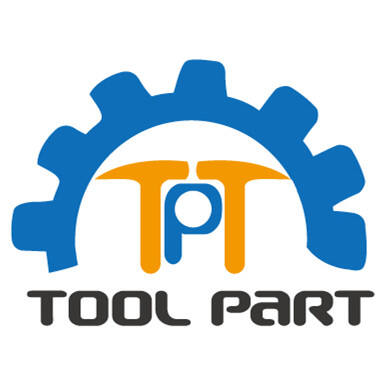Essential Maintenance Guide for Your Power Tool Arsenal
Maintaining your angle grinder in peak condition is crucial for both safety and performance. When angle grinder parts begin to show signs of wear, knowing how to replace them properly can save you money and extend your tool's lifespan. This comprehensive guide will walk you through the essential steps of identifying, selecting, and replacing worn components to keep your angle grinder running smoothly.
Understanding the intricate relationship between various angle grinder parts is the first step toward successful maintenance. From the grinding disc to the carbon brushes, each component plays a vital role in the tool's operation. Let's explore the complete process of parts replacement, ensuring your angle grinder remains a reliable companion for your metalworking and construction projects.
Understanding Your Angle Grinder's Component System
Critical Components and Their Functions
Every angle grinder consists of several essential angle grinder parts that work together seamlessly. The motor serves as the heart of the tool, while the gearbox translates this power into rotational force. The spindle lock mechanism allows for quick disc changes, and the grinding guard provides crucial protection during operation. The power switch, handle, and housing complete the basic structure of this versatile tool.
Carbon brushes conduct electricity to the motor's armature, while bearings ensure smooth rotation of moving parts. The arbor nut and flange secure grinding discs in place, and various electrical components manage power distribution and speed control. Understanding these interactions helps in diagnosing issues and performing accurate replacements.
Signs of Wear and Replacement Indicators
Recognizing when angle grinder parts need replacement is crucial for maintaining tool efficiency and safety. Unusual noises, excessive vibration, or reduced power output often indicate worn bearings or carbon brushes. Visible damage to the grinding guard, loose handles, or frayed power cords require immediate attention. Regular inspection of these components can prevent unexpected breakdowns and potential safety hazards.
Performance changes, such as inconsistent speed or difficulty starting, typically suggest internal component wear. The grinding disc mounting system, including the flange and arbor nut, may show signs of wear through increased wobble or difficulty in securing discs. These symptoms should never be ignored, as they can lead to more severe damage if left unaddressed.
Step-by-Step Replacement Procedures
Preparing Your Workspace and Tools
Before beginning any replacement of angle grinder parts, establish a clean, well-lit workspace. Gather necessary tools including screwdrivers, wrenches, and any specialized tools recommended by your grinder's manufacturer. Ensure you have replacement parts that match your specific model, as compatibility is crucial for proper function and safety.
Document the disassembly process by taking photos or notes, which will prove invaluable during reassembly. Keep small parts organized in separate containers to prevent loss and confusion. Having the user manual nearby can provide additional guidance and specific torque requirements for various components.
Safe Removal and Installation Techniques
Begin by disconnecting the power source and removing any attached accessories. When dealing with angle grinder parts, follow the correct sequence of disassembly to avoid damaging connected components. Pay special attention to spring-loaded elements and note their orientation for proper reassembly.
During installation, ensure all components align correctly and move freely where appropriate. Apply manufacturer-recommended lubricants to necessary parts and verify that all fasteners are tightened to specified torque values. Test the tool's operation gradually, listening for any unusual sounds that might indicate incorrect assembly.
Maintenance Best Practices
Preventive Care and Regular Inspection
Implementing a regular maintenance schedule significantly extends the life of angle grinder parts. Clean the tool after each use, paying particular attention to ventilation slots and moving components. Inspect the power cord for damage, and verify that all screws and fasteners remain tight. Regular lubrication of specified parts prevents premature wear and ensures smooth operation.
Keep a maintenance log to track when various components are replaced or serviced. This history helps identify patterns of wear and anticipate when future replacements might be needed. Store your angle grinder in a dry environment to prevent rust and deterioration of internal components.
Professional Maintenance Tips
While many angle grinder parts can be replaced by DIY enthusiasts, some repairs are best left to professionals. Complex electrical issues or major gear assembly problems often require specialized tools and expertise. Develop a relationship with a reliable service center for situations beyond your skill level.
Consider keeping commonly replaced parts like carbon brushes and backup grinding discs on hand to minimize downtime. Learn to recognize the different sounds and vibrations your tool makes during normal operation, as this awareness helps identify potential issues before they become serious problems.
Frequently Asked Questions
How often should I replace the carbon brushes in my angle grinder?
Carbon brushes typically need replacement every 50-100 hours of use, depending on working conditions and quality. Watch for decreased power output or intermittent operation as signs of worn brushes. Always replace carbon brushes in pairs to ensure balanced performance.
What causes excessive vibration in an angle grinder?
Excessive vibration often results from worn bearings, an unbalanced or damaged disc, or misaligned angle grinder parts. Inspect the spindle and disc mounting system for wear, and ensure all components are properly tightened. Replace any damaged parts immediately to prevent further issues.
When should I consider replacing the entire tool versus individual parts?
Consider replacement when repair costs exceed 50% of a new tool's price, or when multiple major components fail simultaneously. Age, availability of replacement parts, and frequency of repairs should factor into this decision. Sometimes, upgrading to a new model with improved features and safety mechanisms is more cost-effective long-term.
